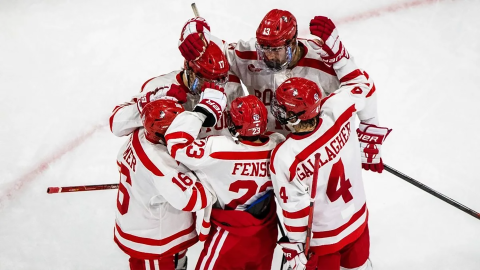Editor’s Note: NESN.com Red Sox reporter Tony Lee will examine one hot-button baseball topic each day in December. On Tuesday, he looked at which player has the strongest chance to become the game’s next $30 million man.
Often, in sports, it takes a bad accident or newfound knowledge to point out a safety hazard. Football has realized the ramifications of concussions and acted accordingly, taking aim at helmet-to-helmet hits, years after players have suffered damage that will impact them for the rest of their lives.
Base coaches in baseball weren’t even made to wear helmets on the field until a few months after Mike Coolbaugh, a first base coach in the Colorado Rockies’ minor league system, was killed by a liner to the neck in 2007. It was as if the concept of such an incident was never even imagined.
One wonders if and when the accident or the know-how on maple bats will cause a reaction significant enough to make a change. Do maple bats create a safety hazard that needs to be addressed?
Frankly, we’ve already been given a scary enough incident with the easily shattered bats. It was in September when Chicago Cubs outfielder Tyler Colvin was virtually impaled by the shard of one such stick, a portion of it lodging into his chest as he ran from third base to home. The scary scene led to the end of Colvin’s season and a reaction by Major League Baseball commissioner Bud Selig, who continues to be pressed on the topic.
“We’re making progress,” Selig said at the time. “All the experts think they may have some solutions. So hopefully, this offseason, we can finish solving the problem. We need to do more.”
Still, Selig cites studies that show that maple bats are breaking at a far reduced rate than they did before, and he knows that he would have a significant fight on his hand with the players association if he took any drastic steps to rid the game of the wildly popular wands.
The players have embraced the bats. While studies show no distinction in the speed at which balls fly off maple bats as opposed to the old-school ash bats, there is something about the feel that has caused roughly half the hitters in the majors to switch over. Barry Bonds was largely responsible for igniting the trend when he used a maple stick while slugging a record 73 homers in 2001.
That was nine years before the Colvin scare, and seven before Pittsburgh Pirates hitting coach Don Long suffered a serious cheek laceration when a snapped maple bat soared into the dugout during a game with the Los Angeles Dodgers. Had Long tilted his head just an inch down before the impact, he might be without an eye today, or worse. Had the bat managed to lift another few feet, it could’ve caught an unsuspecting fan in the front row.
Colvin was just a runner on the base paths, Long one of many men sitting in the dugout. It’s the pitcher’s mound that could see the ultimate accident.
Already a target of line drives that can come back at alarmingly rapid rates, pitchers are encountering more maple splinters than a termite working on an empty stomach. Oakland Athletics reliever Brad Ziegler suffered a gash in his right shoulder when a piece of a bat caught him a few weeks before Colvin’s injury. David Price, the American League Cy Young Award runner-up with Tampa Bay, nearly saw his remarkable season derailed before it started after a Kevin Youkilis cut sent a shard of maple wheeling toward Price’s face.
The lefty instinctively put up his hands to protect himself. The result was a laceration near his right thumb, an injury that was minor enough to allow Price to miss no time, but scary enough to sound the alarm. Again.
“The maple bat is turning into the Claymore mine of baseball,” Rays manager Joe Maddon said after the Price incident, referencing a weapon that explodes steel balls into the face of enemies. “I don’t like it. If we’re going to wait for somebody to actually get killed or impaled, we’re going to wait way too long. Something needs to be done.”
Still, the wait continues, and 2011 will see its fair share of near-misses and perhaps some direct hits. Hopefully, we won’t have to see the latter in order to elicit some sort of change.
Is it time for Major League Baseball to do something about the dangers of maple bats? Share your thoughts below.
On deck: Who is the greatest living ballplayer?



